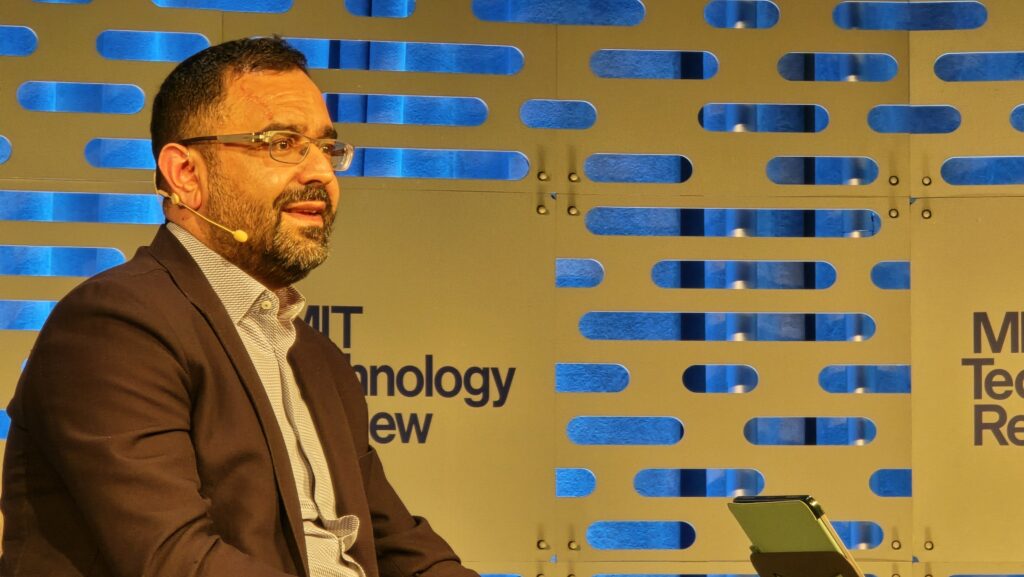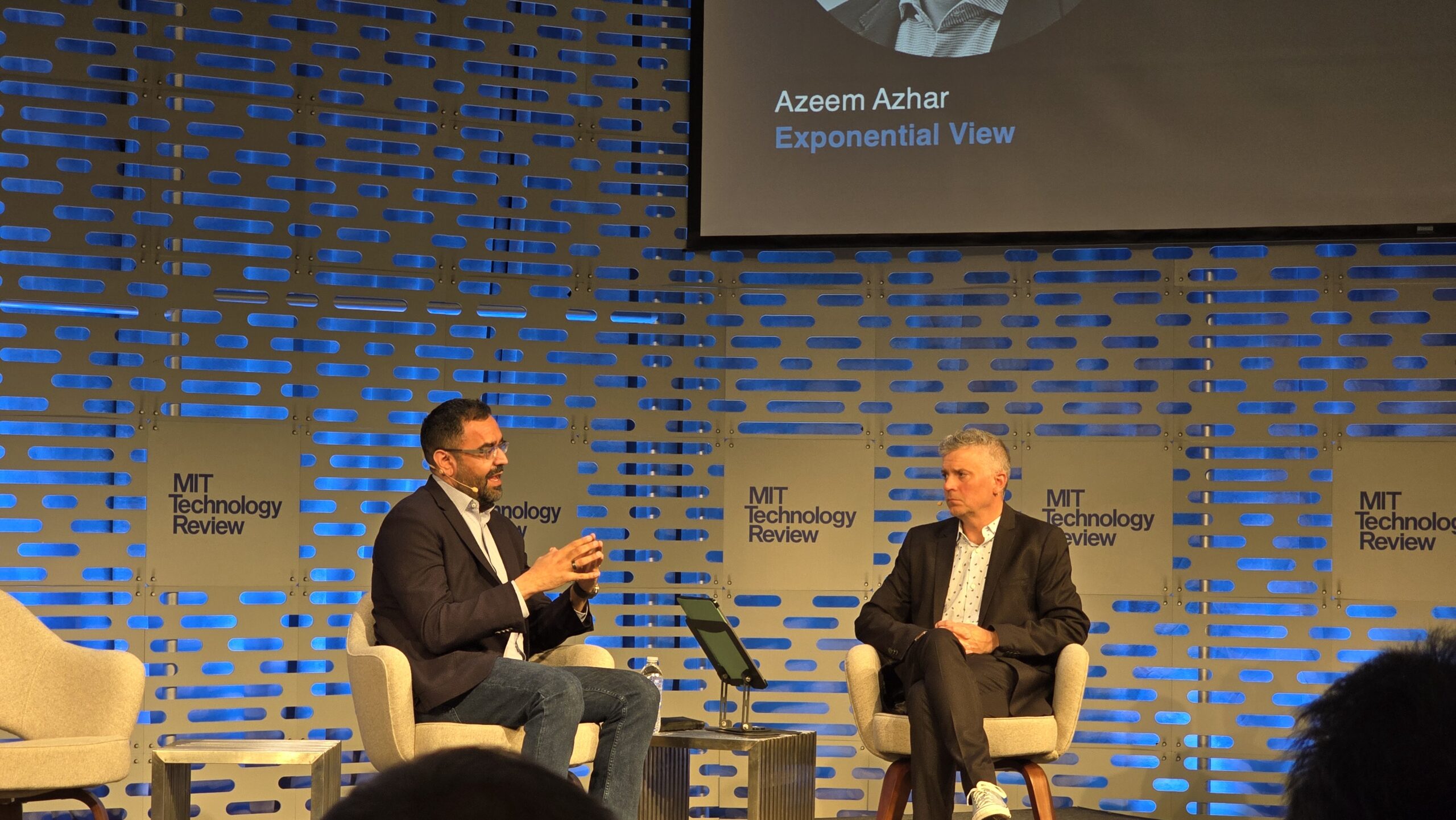Cambridge, MA – MIT EmTechAI: Azeem Azhar’s presentation at MIT EmTechAI offered a sweeping, incisive overview of the current state and future trajectory of artificial intelligence, focusing on the unprecedented speed and complexity of technological change. Azhar began by highlighting how the pace of AI advancement-both in terms of technical breakthroughs and business adoption-is unlike anything seen in previous tech cycles. He emphasized that this acceleration is not just about speed, but about the compounding rate of change, creating a landscape where organizations and individuals alike struggle to keep up, adapt, and make sense of what’s relevant.
A central theme was the psychological and organizational challenge of contending with this rapid evolution. Azhar pointed out that the frameworks and documentation teams create to understand and use AI tools are often obsolete within weeks, forcing a culture of continual learning and adaptation. He noted that the proliferation of foundation models from major tech companies has led to a dynamic environment where even advanced users switch tools rapidly, chasing incremental improvements as new models emerge.
Azhar addressed the organizational readiness gap, noting that most leaders and teams do not feel equipped for the coming changes. He warned against treating AI as a traditional IT project to be outsourced or delegated, arguing instead that successful adaptation requires deep, personal buy-in from top leadership-especially CEOs-who must both intellectually and emotionally grasp AI’s transformative potential. At the same time, he advocated for empowering frontline employees to experiment, innovate, and build solutions, drawing on concepts like “user-centric innovation” to harness insights from those closest to operational challenges.
He also discussed the inherent instability in AI progress, describing it as “three steps forward, one step back, one step sideways.” This volatility is partly due to the explosion in new model releases-moving from one new model every six months to one every two weeks since late 2022-which outpaces the industry’s ability to thoroughly document and test each iteration. As a result, organizations must develop internal expertise and resilience, continually experimenting with new models and approaches rather than waiting for external validation or guidance.

Azhar provided practical examples of how reasoning models like OpenAI’s O3 can tackle complex, real-world problems that previously stumped both humans and earlier AI systems, but he cautioned that these systems still make mistakes and require robust guardrails. He also described how new AI architectures-such as deploying lightweight fact-checking agents-are emerging to address the non-deterministic nature of large language models, blending traditional software reliability with AI’s flexibility.
Looking at the bigger picture, Azhar explained that AI’s exponential growth follows a pattern of overlapping S-curves, where each wave of innovation eventually plateaus but is quickly overtaken by new approaches, sustaining overall progress. He argued that, while physical and theoretical limits exist, there is no sign of a slowdown in the next decade or more.
Finally, Azhar stressed that the organizational changes required to harness AI are as much about mindset and culture as they are about technology. Companies must avoid premature cuts to human talent, as tacit knowledge and adaptability remain crucial. The transition, he warned, will be as profound as the shift from steam to electricity-but will unfold over a few business cycles rather than decades, demanding agility, strategic vision, and a willingness to rethink every aspect of how work gets done.
For more information, please visit the following:
Website: https://www.josephraczynski.com/
Blog: https://JTConsultingMedia.com/
Podcast: https://techsnippetstoday.buzzsprout.com
LinkedIn: https://www.linkedin.com/in/joerazz/


Leave a Reply
You must be logged in to post a comment.